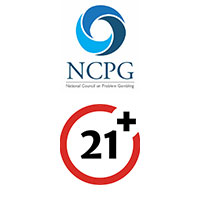Blackjack players are always looking for an advantage. The easiest way is to find a game that pays 3:2 when a player is dealt a natural blackjack. The 6:5 blackjack game has a much higher house edge.
The house edge is even larger when a player doesn’t play with perfect basic strategy. Casinos allow players to use a basic strategy card at the table. Unfortunately, not many players that could use the help from a blackjack card carry one.
There’s another way to find an edge when playing blackjack that’s often overlooked. It’s actually one of the easiest ways to decrease the house edge in a blackjack game. The fewer decks in play during a blackjack game, the lower the house edge. It’s that simple.
Blackjack House Edge By Number Of Decks
Playing a blackjack game with fewer decks single-handedly lower the house edge. This isn’t the only way to lower the house edge. There are plenty of blackjack rules that can make a game more player-friendly. If all rules are the same, the house edge in a blackjack game will be lower whether the casino pays 3:2, 6:5, or even money when a player is dealt a natural blackjack.
We’ll use the same blackjack game rules to show the difference in house edge depending on the number of decks being played.
- Dealer hits on soft 17
- Player can double after splitting
- Player can double on any two cards dealt
- A player can resplit up to four (4) times
- Player cannot resplit aces
- Player cannot hit split aces
- No surrender
- Blackjack pays 3:2
Here are the different advantages for the casino using the blackjack house edge calculator from Wizard of Odds. Remember, the house edge is based on perfect basic strategy. Every misplayed hand increases the house edge for the casino.
- 1 Deck: 0.16%
- 2 Decks: 0.46%
- 4 Decks: 0.60%
- 6 Decks: 0.64%
- 8 Decks: 0.66%
As you can see the house edge for the casino increases when there are more cards in play. The same holds true for a game that pays 6:5 on a natural blackjack. Here’s the house edge for the same game with the adjusted payout for blackjack:
- 1 Deck: 1.55%
- 2 Decks: 1.83%
- 4 Decks: 1.96%
- 6 Decks: 1.99% (2% rounded up)
- 8 Decks: 2.019%
As you probably expected, the house edge is higher playing a 6:5 blackjack game. This example shows that the house edge is lower when the game has fewer decks in play.
Differences In Gameplay Depending On Deck Size
Single deck and double deck blackjack are often played differently than six and eight deck blackjack. The latter two games are the blackjack games players see most often in a casino. These games are dealt from a shoe or a continuous shuffle machine. Cards are dealt face up and the player uses hand signals to show the eye in the sky what play they want t make.
Single and double deck blackjack are considered “pitch” blackjack games. The dealer holds the cards and flings (or pitches) them face down to the players. That’s not the only difference from traditional blackjack games.
The player swipes the cards towards themselves to hit. If a player is dealt a blackjack, they flip the cards over to show the dealer. A player that wants to double or split they will flip the cards over and place the additional money next to the original wager.
When the player is ready to stay, the cards are placed under the wager. Don’t touch the money. Just slide the cards under the wager. The eye in the sky doesn’t like when you touch the money after placing a wager.
Blackjack players have different preferences. While most players seem to dislike any game with a continuous shuffle machine, others seem to have a preference for a shoe or pitch game.
Personally, I prefer the pitch blackjack games. The lower house edge is an obvious positive but that’s not the only reason. While I can’t really count cards, playing a game with fewer decks makes tracking cards a little easier. Lastly, the game is slower because the dealer has to shuffle or pick up a new deck every few games.
